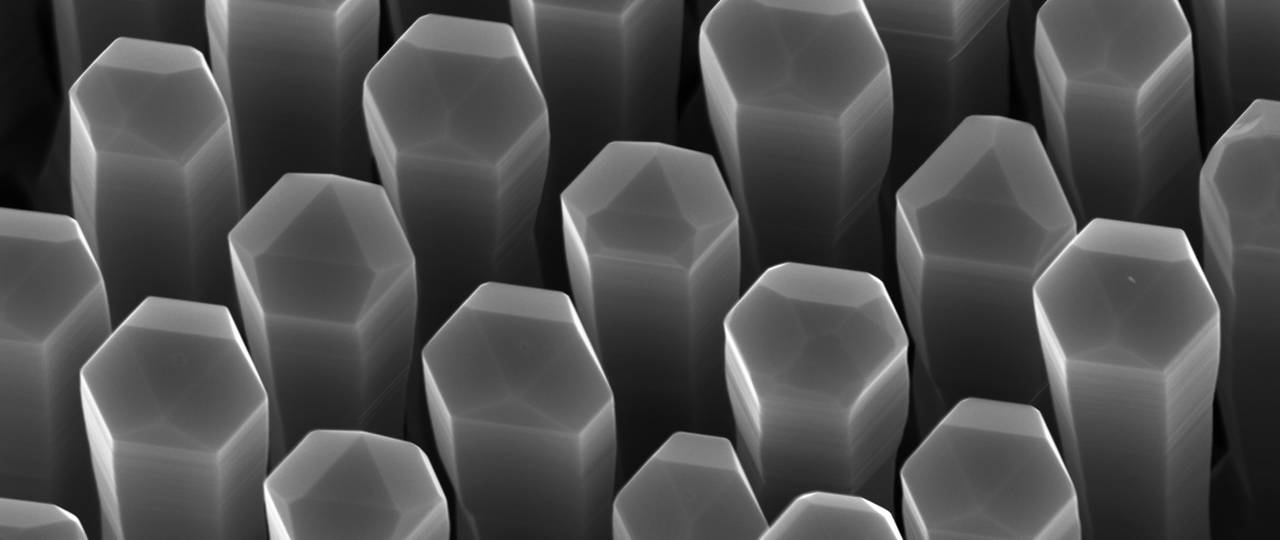Researchers from the Technical University of Eindhoven (TU/e)in the Netherlands and Technical University of Munich (TUM) in Germany reported the development of a light-emitting, silicon-germanium (SiGe) alloy. The achievement may open a new way for integrated chip function. The revolutionary results were published in ‘Nature,’ on April 8, 2020.
The research team made germanium and alloys from germanium and silicon with a hexagonal crystal lattice which has a direct band gap to emit light. The concept of hexagonal silicon was proposed by Prof. Erik Bakkers, the research lead, and his team back in 2015. They grew a hexagonal crystal structure with nanowires made of another material. This served as a template for a germanium-silicon shell on which the underlying material imposed its hexagonal crystal structure.

(Image: TUM)
The team then analyzed the optical characteristics with each successive generation to optimize the production process and finally turned the nanowires light emitting. An efficient light emission from direct-bandgap hexagonal Ge and SiGe alloys was thus demonstrated. Researchers also measured a sub-nanosecond, temperature-insensitive radiative recombination lifetime and observe an emission yield similar to that of direct-bandgap group-III–V semiconductors such as InP or GaAs.
Moreover, by controlling the composition of the hexagonal SiGe alloy, the emission wavelength can be continuously tuned over a broad range, while preserving the direct bandgap.
The team believes that a laser made from SiGe alloys and capable of integration into conventional production processes will appear sooner or later.
“If we can implement on-chip and inter-chip electronic communications by optical means, speeds can be increased by a factor of up to 1,000. In addition, the direct combination of optics and electronics could drastically reduce the cost of chips for laser-based radar in self-driving cars, chemical sensors for medical diagnostics, and air and food quality measurements,” said Jonathan Finley, professor of Semiconductor Quantum Nanosystems at TUM.












